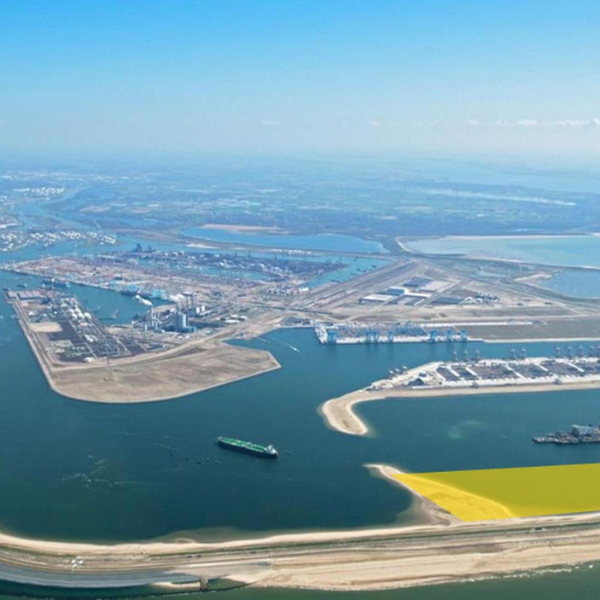Offshore Centre on Maasvlakte II

Offshore Centre on Maasvlakte II
The Port of Rotterdam Authority is developing a new area of the Princess Alexia Port (part of the Maasvlakte II land reclamation project) into a large Offshore Centre that will be the first facility of its size in Europe. The site will accommodate suppliers and construction companies operating in the offshore wind energy sector, as well as firms that dismantle oil and gas platforms. The Authority wants the Offshore Centre to become Europe’s leading offshore hub. Witteveen+Bos is contributing to this area development project, and has been commissioned to engineer the heavy load deep-sea quay and the access roads, among other things.
The company has defined seven sustainable design principle to maximise the impact of engineering work, and to truly put the principles of sustainability into practice. Witteveen+Bos considers the application of these principles in all its activities – and with great success in this particular project, where flexible design, the ‘Trias Energetica’ approach and stakeholder participation are key.
Witteveen+Bos project leader Peter Quist: ‘During the planning stage we provided geotechnical engineering advice for the land reclamation work. We are now advising on the filling-in of the 70-hectare site, devoting particular attention to the geotechnical aspects. The quay must be suitable for the high loads that result from activities like the transhipment of components for large offshore wind turbines. We highlighted our sustainable design principles in the tender procedure. Flexible design plays a key role in ensuring the project is future-proof. The deep-sea quay has a design life of 50 years. Market and user requirements may change considerably in as little as ten years. It must then be possible to use the Offshore Centre for other purposes, with a few minor adjustments. In addition, we have applied the so-called Trias Energetica principle by minimising the consumption of energy and raw materials and by using renewable sources as much as possible. Stakeholder participation was applied as the third sustainable design principle. Customer requirements were discussed with future users and included in the decision-making process. Such a process contributes to an optimised design.’
In mid-2017, work started on depositing the sand (‘rainbowing’) and constructing the shipping channel. Seven million cubic metres of sand will be deposited in total. The first phase comprises 30 hectares and will be completed by late 2017, while the remaining 40 hectares will be finished in early 2018. After a period to allow the sand to settle, the construction of the deep-sea quay will start. The first berths are scheduled for completion in 2019. ‘We’re working to a tight schedule, which takes into account the plans for building offshore wind farms in the North Sea,’ says Matthijs Peeperkorn, project manager for the Port of Rotterdam Authority. ‘To join forces and maximise synergy, we believe it is important for offshore companies to cluster in the Offshore Centre. The energy transition is in full swing, and we are adjusting our policies accordingly. New markets are opening up, but there is also a lot of competition from other ports. Rotterdam offers the advantages of more space and greater water depth, but that doesn’t mean we can rest on our laurels - especially given our aim of reducing CO2 emissions by approximately 85 % by 2050.’
More information?
